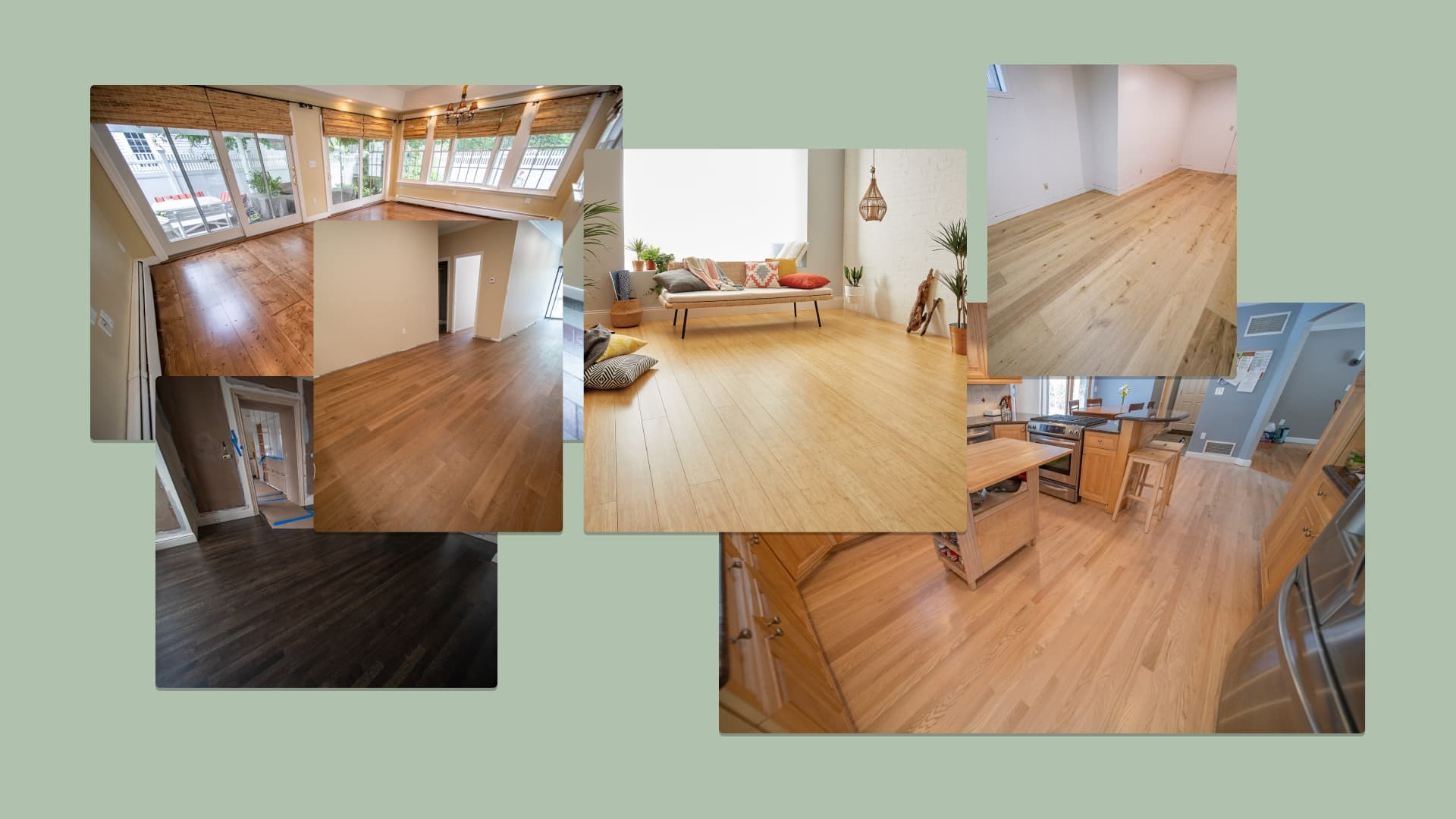Getting ready to install hardwood floors? Homes with hardwood floors often have a resale value that rises by 3-5%. Choosing wood for your floors is not just about appearance. It involves picking a strong, useful and cost-effective option that fits your home and lifestyle. Selecting from many options might be very difficult. This article probably helps answer this question: What type of wood is best for hardwood floors?
Hardwood Flooring Decision-Making Tool
Hardwood Flooring Basics
Two principal types of hardwood flooring are in existence. They are solid hardwood and engineered hardwood. Each type bears unique attributes. There are also positive aspects and negatives. Selections are based on residence and requirements. There are choices between pre-finished and unfinished hardwood. Each choice carries its own advantages. Now we will delve deeper.
Solid vs. Engineered Hardwood
| Feature | Solid Hardwood | Engineered Hardwood |
|---|---|---|
| Material | Single piece of solid wood. | Multiple layers bonded together. A veneer tops it. |
| Durability | Sanded and refinished repeatedly. | Resilient in wet areas. Refinishing is limited. |
| Cost | High start-up cost. | Commonly less expensive. |
| Installation | A professional is required. | Easier for a DIY enthusiast. |
| Best for | Long-lasting use. Classic design. | Basements, bathrooms. Spaces with varying moisture. |
Advantages of Solid Hardwood:
- ✔️ A possibility of longevity exists with proper care.
- ✔️ Its beauty is natural and timeless.
Disadvantages of Solid Hardwood:
- ❌ In wet conditions warping is likely.
- ❌ Installation and maintenance come at a higher price.
Advantages of Engineered Hardwood:
- ✔️ It resists moisture and temperature changes.
- ✔️ Friendlier to DIY and more affordable.
Disadvantages of Engineered Hardwood:
- ❌ Limited options for sanding and refinishing.
- ❌ Slightly less of a natural look.
Pre-finished vs. Unfinished Hardwood
| Feature | Pre-finished Hardwood | Unfinished Hardwood |
|---|---|---|
| Durability | Robust factory finish. | Requires finishing at site. It might be less durable. |
| Installation Time | Quick. Ready for use soon. | It takes longer due to more work needed. |
| Customization | Set factory colors, styles. | Colors and styles can be custom. |
| Best for | Perfect for fast, simple installation. | Suits custom jobs needing unique colors, styles. |
Advantages of Pre-finished Hardwood:
- ✔️ Very fast installation. No need for on-site sanding.
- ✔️ Highly scratch-resistant. Thanks to factory finish.
Disadvantages of Pre-finished Hardwood:
- ❌ Limited options. Changing color or style is difficult.
- ❌ Seams may be visible. They appear between boards.
Advantages of Unfinished Hardwood:
- ✔️ Customizable. Adapts to your color and style.
- ✔️ After sanding and finishing. Results in a smooth look.
Disadvantages of Unfinished Hardwood:
- ❌ Installation time is greater.
- ❌ More care is essential. This maintains its pleasing appearance.
Is it Worth it to Install Flooring Yourself?
When hardwood flooring is in question engineered hardwood and pre-finished options are the most DIY-friendly. Engineered hardwood has click-and-lock systems. Systems facilitate installation without needing professional tools. This is not the case with solid and unfinished hardwoods. These usually require sanding, staining and use of professional-grade equipment. Installation can be more challenging and time-consuming when taking the DIY route.
For many homeowners the cost of hiring professionals is worth it. It provides precision and time savings. Especially for intricate jobs. But of course, DIY installation is generally cheaper. More in-depth information can be found in our other article: Is it cheaper to install hardwood floors yourself?
Important Aspects When Picking Hardwood
Selecting appropriate hardwood flooring includes weighing durability, style, cost and environmental factors. Below we'll dissect each crucial aspect. This exploration will assist in your home decision-making.
Durability
The Janka hardness scale gauges how resistant wood species is to stress. Harder woods offer more durability. They are perfect for spots with lots of traffic. Think about places like kitchens, hallways and living rooms.
| Wood Species | Janka Hardness (lbs) | Best For |
|---|---|---|
| Hickory | 1,820 | High-traffic, pet-friendly homes. |
| Maple | 1,450 | Modern homes with a clean look. |
| Red Oak | 1,290 | Classic style, moderate durability. |
| Walnut | 1,010 | Low-traffic areas, luxurious aesthetics. |
| Pine | 420 | Bedrooms or low-use spaces. |
Aesthetics
The look of hardwood flooring gets shaped by its grain color and texture. Some well-liked choices and their charm are here:
- Red Oak: Warm tones are coupled with visible grain. Ideal for traditional or rustic styles.
- Maple: Light colors of a creamy hue work with subtle grain patterns. Fit for modern and minimalist spaces.
- Walnut: Rich hues of dark brown show with fine grain. The match for formal rooms.
- Hickory: Grain patterns are strong with contrasting colors. You can make use of it in rustic or farmhouse designs.
⚠️ Tip: Think about your furniture and wall colors when picking hardwood. For instance, opt for light woods such as Maple for brightening a room. Go for darker options like Walnut to create a warm atmosphere.
Cost:
Cost of hardwood flooring varies. It is based on species grade, installation method. General price range is given below. Guiding your decision it does:
| Wood Species | Material Cost (per sq. ft.) | Installation Cost (per sq. ft.) |
|---|---|---|
| Pine | $2 - $4 | $3 - $6 |
| Red Oak | $5 - $8 | $4 - $8 |
| Walnut | $8 - $12 | $5 - $10 |
| Hickory | $7 - $11 | $4 - $8 |
Cost-Saving Tips:
- Opt for engineered hardwood. It is more value-driven.
- Seek out price cuts. These often occur during seasonal promotions. You can also go to clearance sales.
Climate Suitability
Wood is a natural material. It expands and contracts due to temperature and humidity changes. The selection of a species fitting local climate is vital. It promises long-term durability.
- Humid Climates: Engineered hardwood is superior. It's optimum for humid climates. Also, it is moisture-resistant. Hickory and White Oak are perfect. They fit the bill too.
- Dry Climates: Solid hardwood is ideal. In dry climates it's perfect. It's less inclined to crack. The best choice is Walnut or Maple.
- Fluctuating Temperatures: Engineered hardwood is a great alternative. It's not easily affected by humidity. It can work in rooms with changing humidity. It works in both basements and other rooms.
⚠️ Tip: Maintain stable indoor conditions. Use dehumidifier or humidifier. It extends life of your hardwood flooring.
Comparative Analysis of Top Hardwood Species
Hardwood flooring displays broad range of species. Each species has its distinct qualities. These cater to varied needs and styles. Grasping nuances of these species is imperative. It helps in making well-informed decisions. Decisions about what is best for the home. The species span from traditional species like Oak Hickory to exotic species like Brazilian Cherry and Mahogany.
Traditional Hardwood Species
Red Oak and White Oak
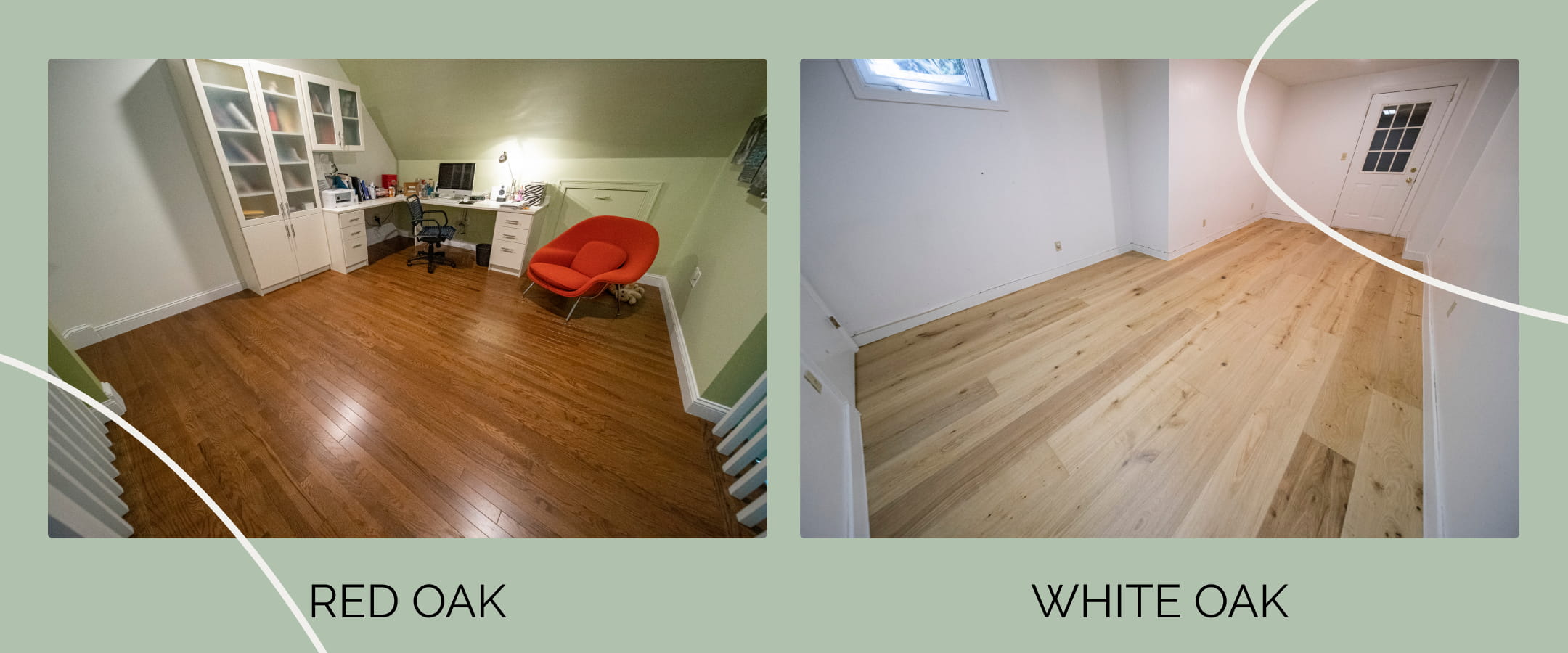
Oak is a very favored hardwood choice. Often noticed in North America, this species is renowned for its endurance. It is known for its ageless charm too.
Red Oak boasts warm hues. A distinct grain pattern enhances these hues. These features render this hardwood species charm that is typically American. It suits homes that are homely and rustic. Red Oak is reasonably hard. On Janka hardness scale, it earns a score of 1,290. This hardness makes it suitable for a broad range of home environments. Living rooms and hallways for instance.
White Oak gives a different appearance. It has a modern and understated look. The hues range from light to medium brown. Straight grain patterns are another enticing feature. These features make it a favorite for specific home designs. These designs include contemporary and transitional spaces. White Oak is marginally harder than the Red Oak. On Janka rating, it has a value of 1,360. This Oak also has a natural resistance to moisture. Ideal for areas in the home that might see spills. Areas such as kitchens or entryways. Even areas with high humidity levels are a problem.
Maple
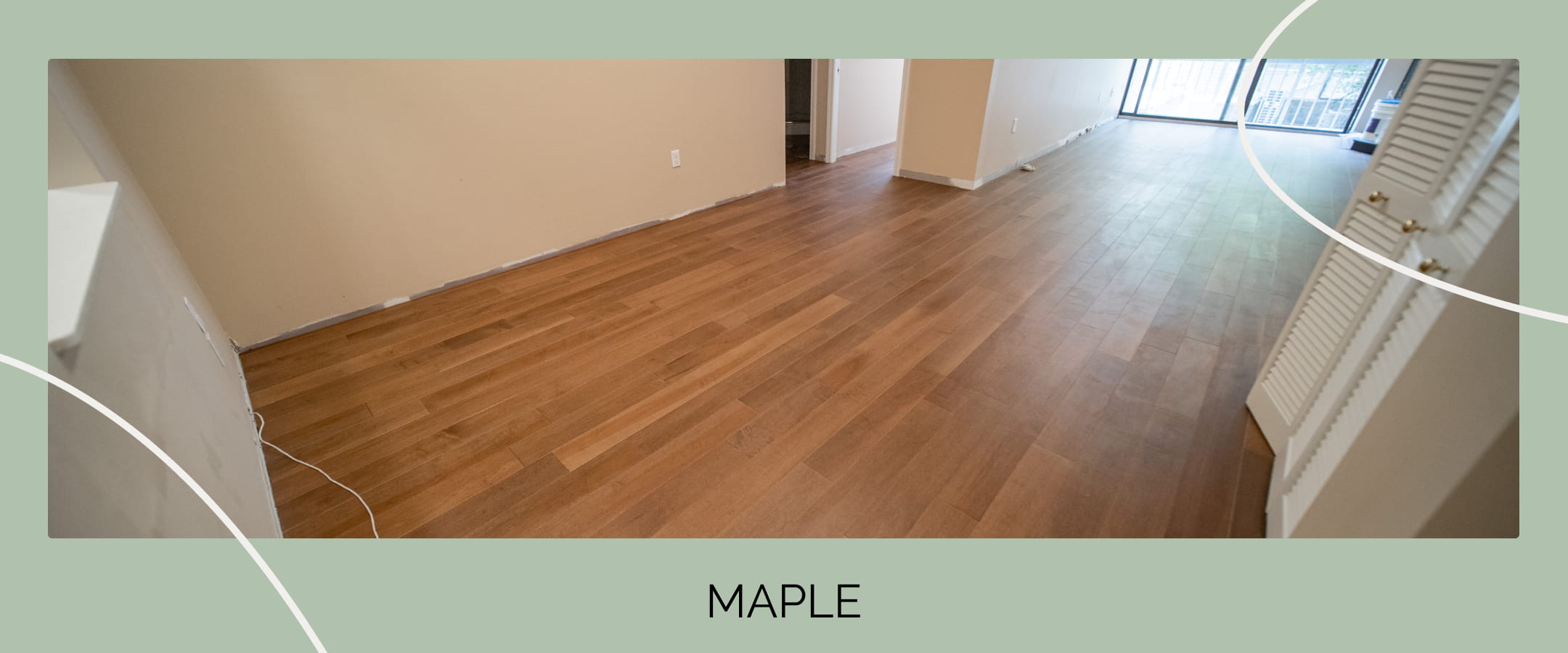
Go for Maple for a modern style that exudes elegance. This wood has a color that's light and creamy. Minimal patterns make its look clean understated. Fabulous for spaces that are minimalist. Or inspired by Scandinavian design. Maple is durable. It scores 1,450 on Janka scale of hardness. Ideal for high-traffic locations. It does have a disadvantage though. Smooth texture of Maple shows scratches easily. Thus use rugs with this wood. Or mats if your house is bustling with activities.
Walnut
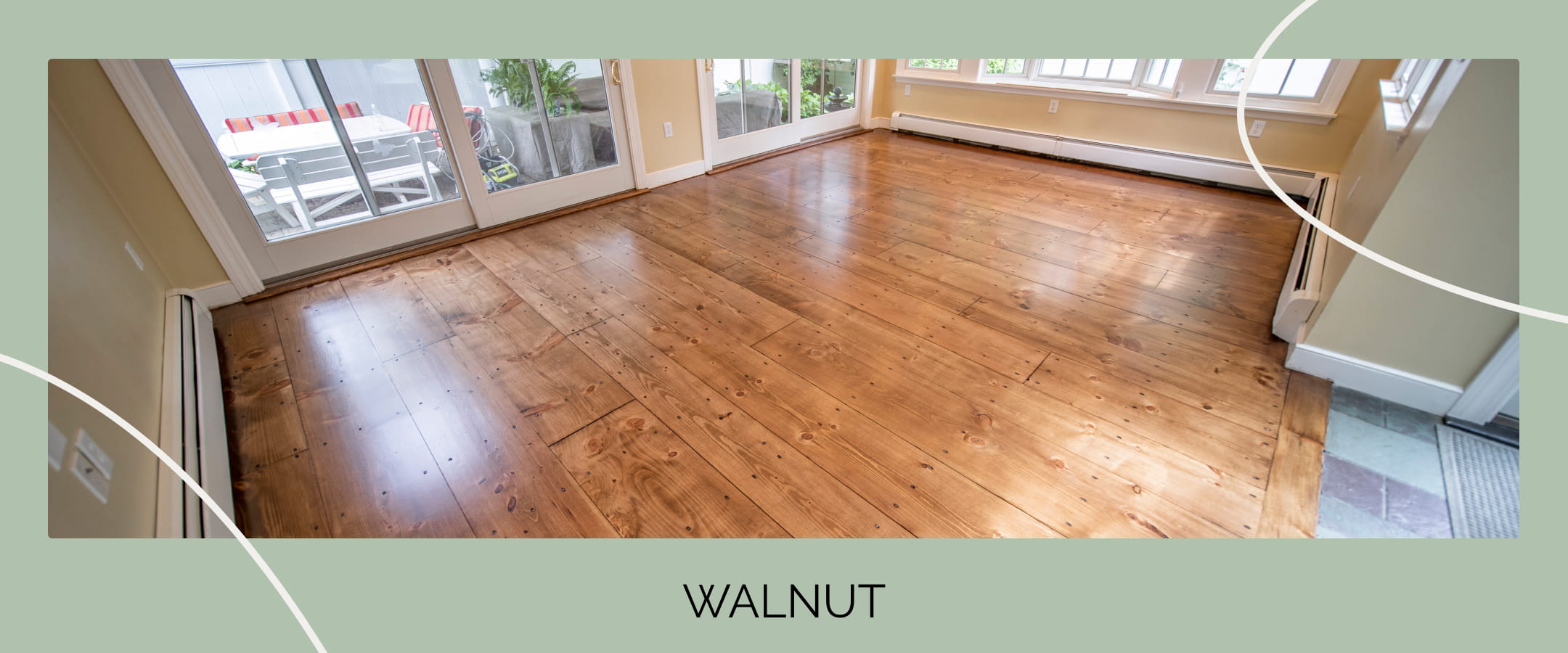
Walnut makes for a luxurious choice. Its elegance and warmth defy comparison. This wood has rich hues of dark brown. It features a fine grain. This added sophistication elevates any room's decor. Janka rating of Walnut is 1,010. This makes it slightly softer compared to other hardwoods. An advantage. Walnut becomes a focal point in a home. An inviting and cozy atmosphere is the result of its natural beauty.
Hickory
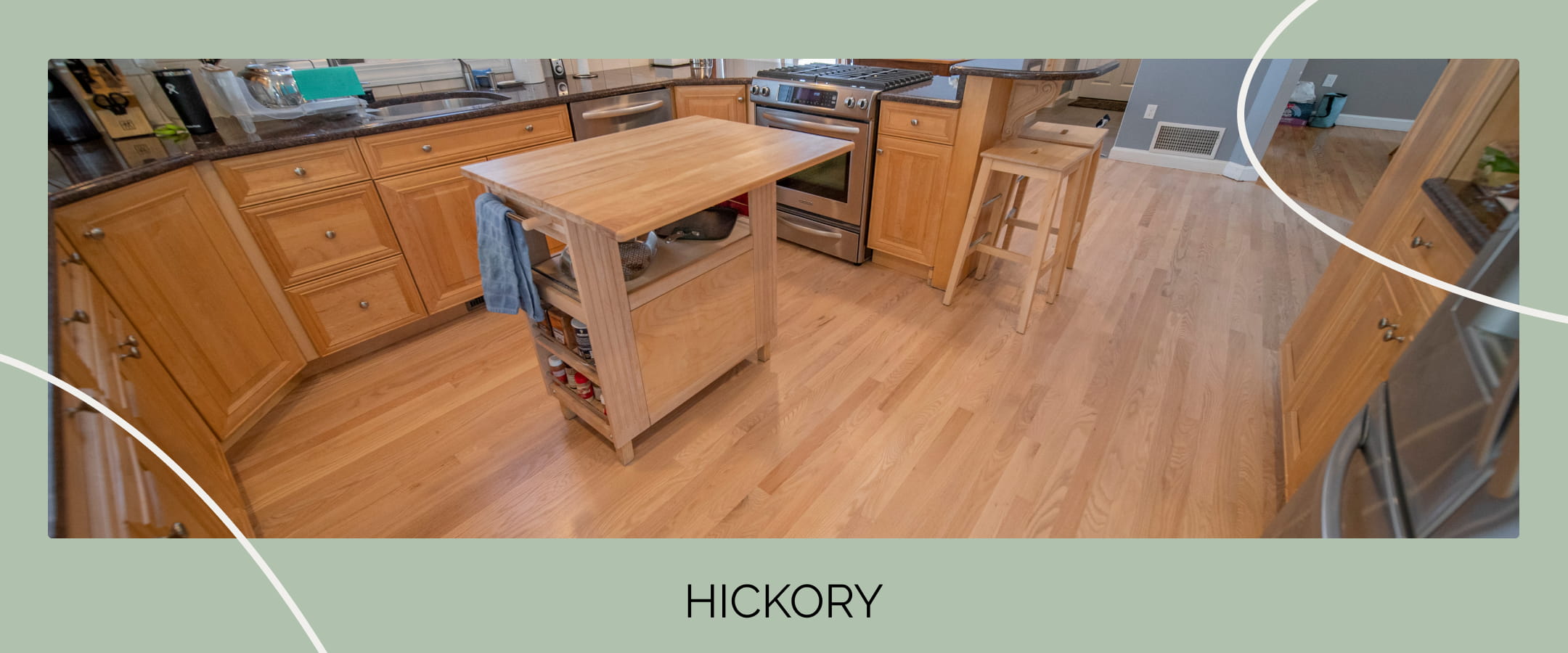
Hickory is hard. It can pose challenge during installation due to its strength. Often professional assistance is necessary. But it is ideal for low-traffic areas. Bedrooms or home offices are perfect spaces for Walnut. Home environments with children and pets require durable flooring. Hickory is suitable for such situations. Hickory has a Janka hardness rating of 1,820. It resists scratches dents and wear. Bold rustic look is from its distinctive grain. The light and dark tones contrast well. This contrast is ideal for farmhouse or cabin-style homes.
Exotic Hardwood Species
Brazilian Cherry (Jatoba)
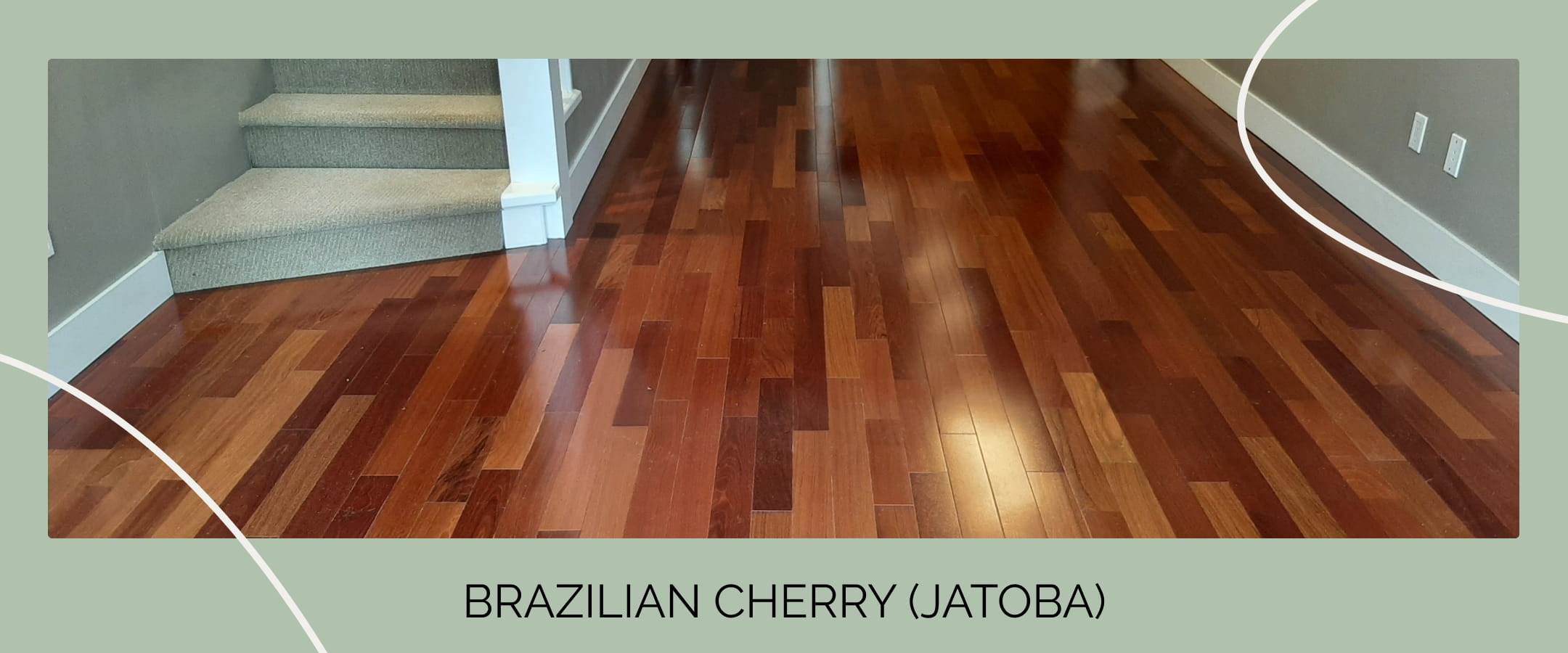
Exotic hardwoods have a lot to offer. Species like Brazilian Cherry are extremely durable. They also offer a bold look. Brazilian Cherry boasts Janka hardness of 2,350. This means it's a top choice for high-traffic areas. Think kitchens and hallways. The tones of this wood are deep reddish-brown. It also has dramatic grain patterns. All these characteristics make Brazilian Cherry's appearance striking. This wood can make any space look luxurious. However its hardness can also pose challenges during installation. The high-end appeal of Brazilian Cherry is reflected in its cost.
Mahogany
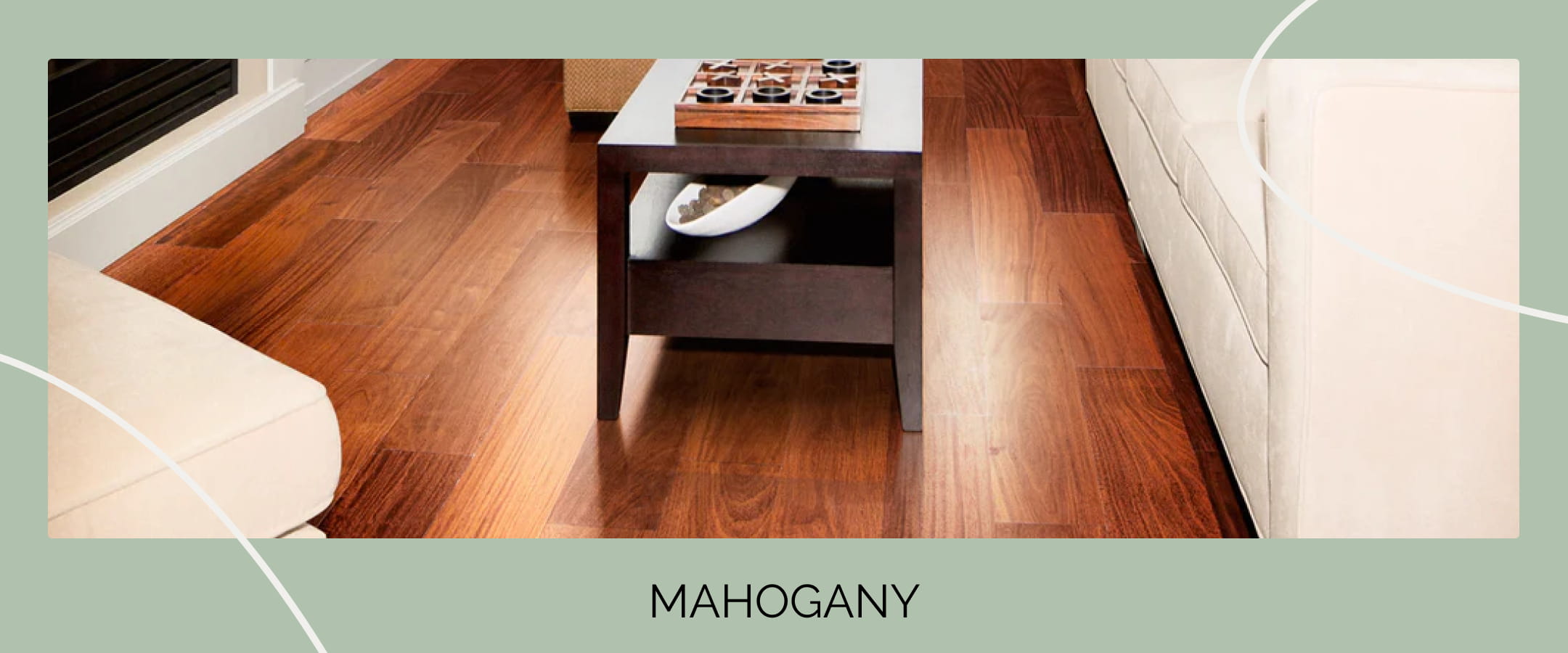
Mahogany denotes elegance and tradition. It shows rich red-brown hues and unique straight grain patterns. These characteristics give it a classic luxurious feel. Despite being softer than other hardwoods, Mahogany is still a choice. It has a Janka rating of 800. This rating makes it a favorite for formal spaces. Spaces like dining rooms or libraries. Routine maintenance is necessary. Polishing for instance. This upkeep helps to sustain its natural shine and ensures longevity.
Bamboo
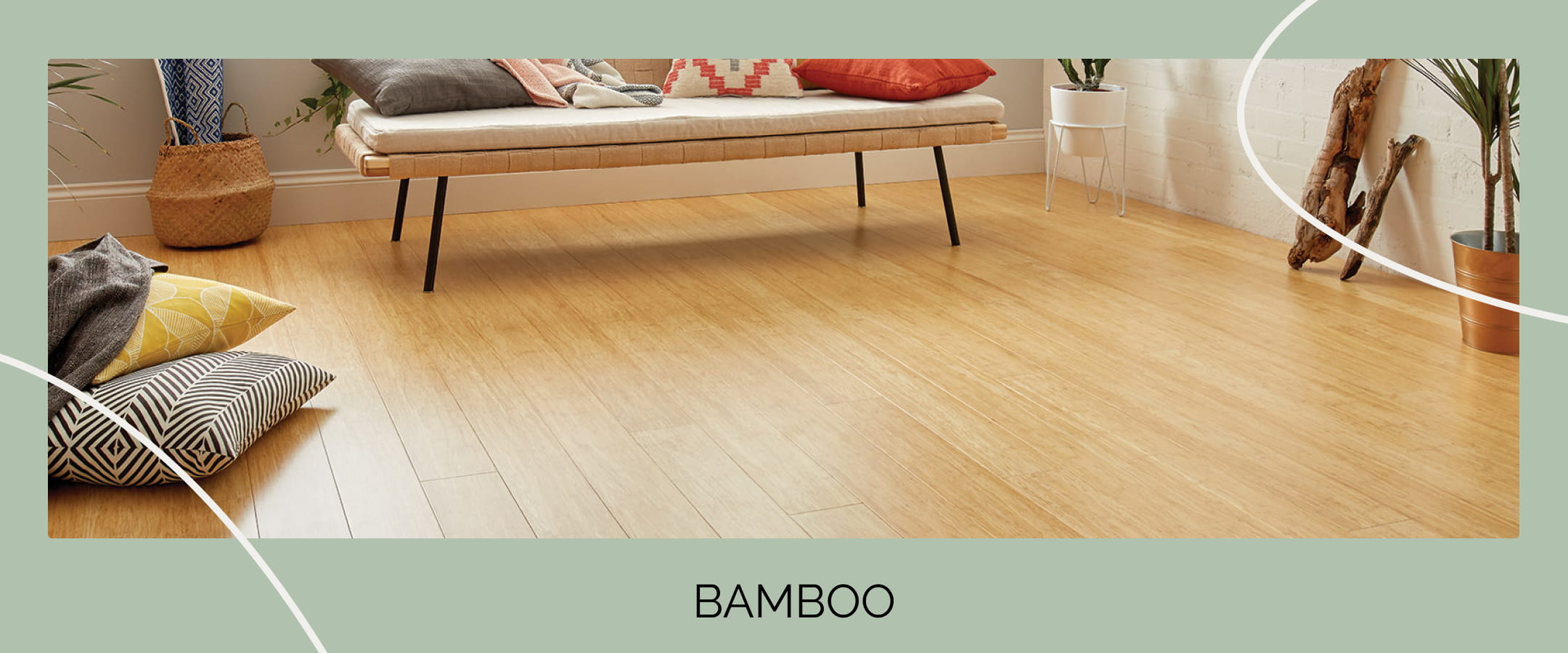
Bamboo is not a hardwood by definition. Yet it often gets included in hardwood flooring talks. This is due to similar traits. Bamboo offers excellent durability. It also has a modern aesthetic. There is a type of bamboo called Strand-woven. It is incredibly strong. The Janka hardness of this strand-woven bamboo is around 1,380. This puts it on par with traditional hardwoods. The colors of bamboo vary from light to dark. Grain patterns in bamboo are often uniform. Both these traits are well-suited to contemporary or eco-concious homes.
Eco-friendliness of bamboo is worth noting. It makes bamboo an attractive choice. Especially for homeowners mindful of the environment. Also it is affordable. This makes it suitable for a wide range of people.
Choosing the Right Hardwood for Your Needs
Hardwood species each possess unique strengths. It's crucial to weigh the needs and style of your abode in the selection process. Hickory or Brazilian Cherry are marvelous choices. They are long-lasting and family-friendly. No other hardwoods match their level of durability. Walnut or Mahogany cater to an aesthetic and sophisticated desire. They can furnish a look of elegance to your space. If versatility is on your mind Red Oak and White Oak are the way to go. They remain classics because they fit a variety of interior styles.
Identifying the unique traits of each distinct wood type is crucial. It will enable you to make an educated final choice. It's of utmost importance that your flooring is both aesthetic and functional.
Comparison Table
| Species | Janka Hardness (lbs) | Appearance | Cost (per sq. ft.) | Maintenance | Best For |
|---|---|---|---|---|---|
| Red Oak | 1,290 | Warm, prominent grain | $5 - $8 | Moderate | Traditional, rustic designs |
| White Oak | 1,360 | Light brown, subtle grain | $6 - $9 | Easy | Modern, moisture-prone areas |
| Maple | 1,450 | Light, minimal grain | $7 - $10 | Moderate | Contemporary, minimalist spaces |
| Walnut | 1,010 | Dark, fine grain | $8 - $12 | High | Formal, low-traffic rooms |
| Hickory | 1,820 | Contrasting, bold grain | $7 - $11 | Low | High-traffic, rustic homes |
| Brazilian Cherry | 2,350 | Reddish-brown, dramatic | $10 - $15 | Moderate | Luxury, durable spaces |
| Mahogany | 800 | Rich red, straight grain | $9 - $14 | High | Elegant, formal areas |
| Bamboo | 1,380 | Uniform, eco-friendly | $4 - $8 | Moderate | Sustainable, family homes |
Conclusion
Selection of correct hardwood flooring involves equilibrium. It requires attention to durability aesthetics, cost. Hickory and Maple work ideally for spaces with high foot traffic. Walnut and Red Oak increase appeal. They bring timeless warmth.
Engineered hardwood meets need for resistance to moisture with affordability. Exotic options are also available. Brazilian Cherry is one such option. It brings in a touch of luxury.
For expert guidance and wide range of options visit Weles. Also explore our products page. We're here to help. We'll find the perfect hardwood for a home.
